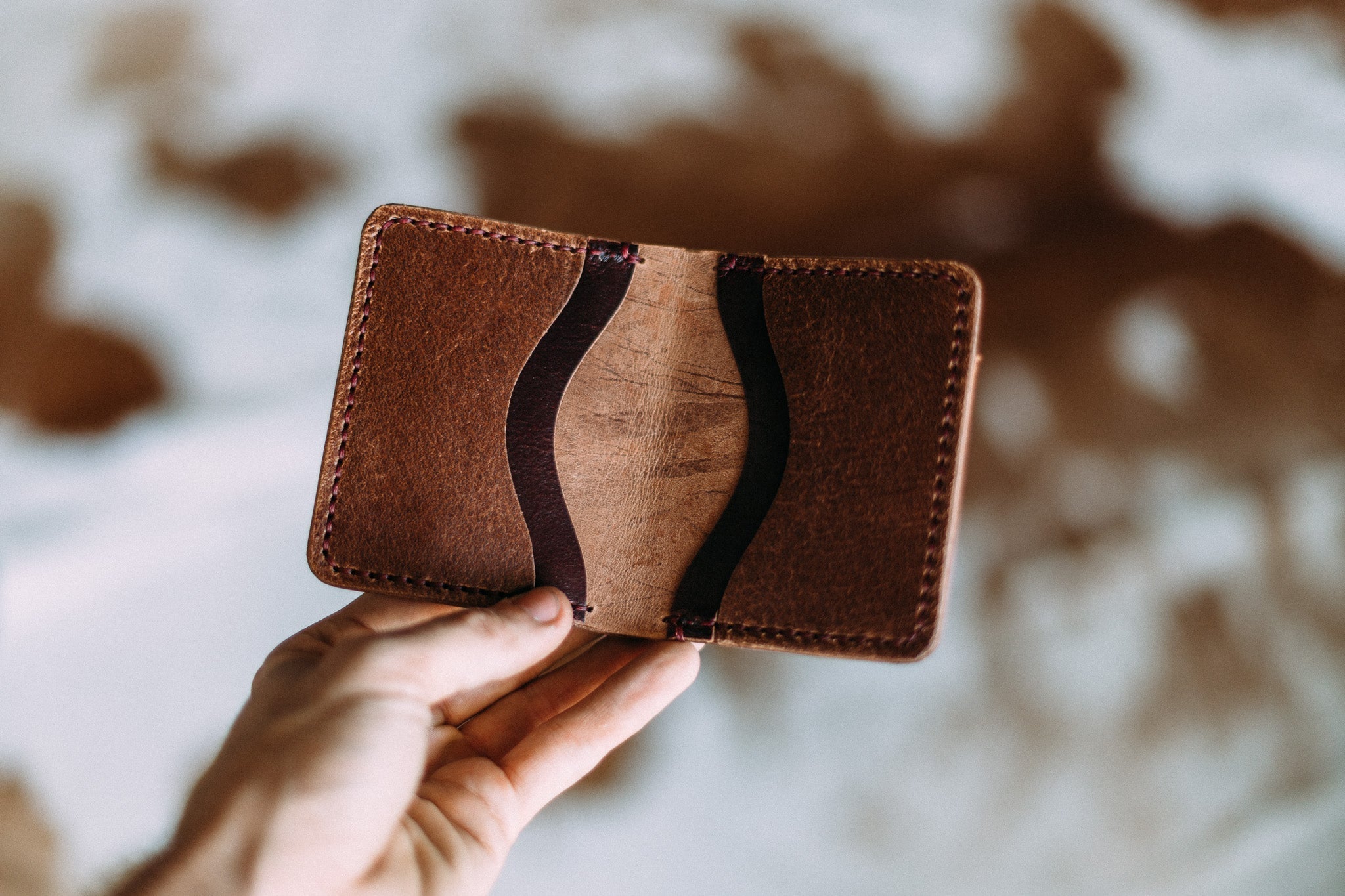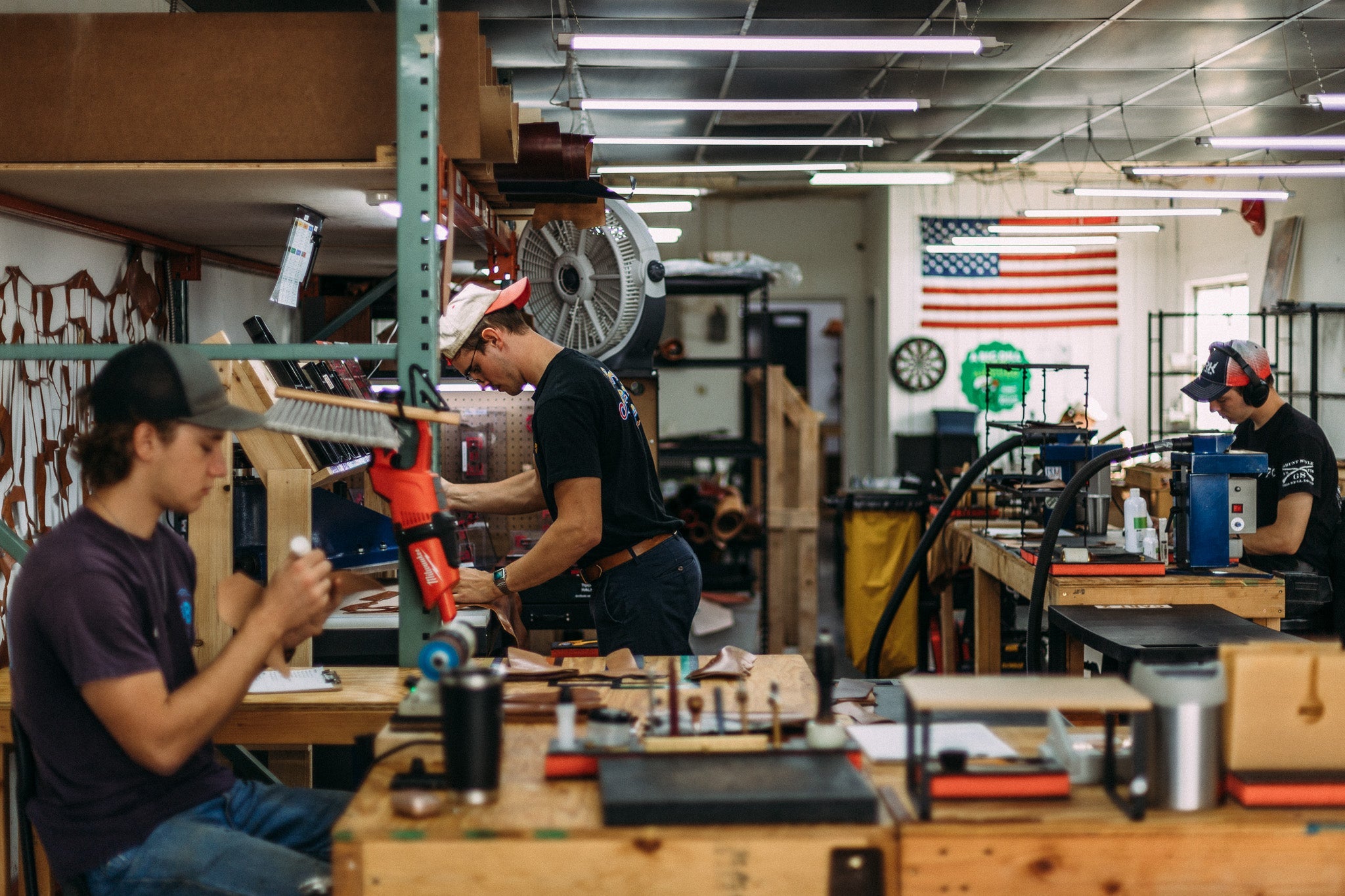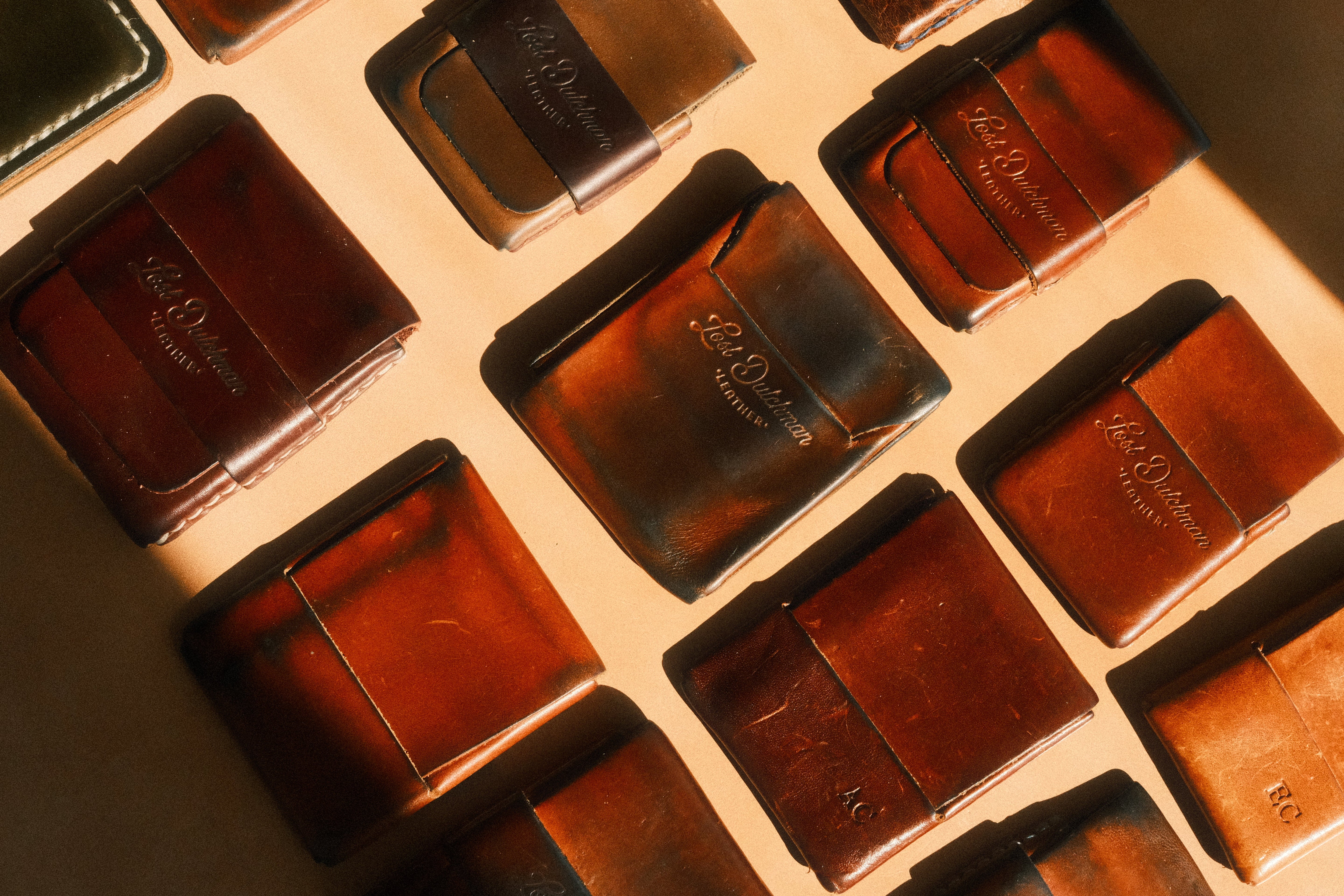
Lost Dutchman Leather Wallets vs Saddleback Leather Wallets
A wallet isn’t just a pocket accessory. It’s a small piece of your daily life, one you reach for dozens of times a day. The right wallet carries more than cards and cash; it carries a story. It endures years of use, softening, darkening, and developing the kind of character that only full-grain leather can reveal. That’s why choosing one is a decision worth slowing down for.
When the conversation turns to American-made leather wallets, two names inevitably rise to the surface: Lost Dutchman vs Saddleback. Both are respected for craftsmanship, both use top-tier materials, and both have loyal followings. But their philosophies, designs, and execution couldn’t be more different.
This comparison isn’t about better or worse, it’s about understanding what sets each brand apart so you can decide which one best fits your hand, your pocket, and your lifestyle.
A Tale of Two Brands: Philosophy and Beginnings
Every brand carries a story. That story often explains not only what a company makes, but why it makes it.
Lost Dutchman Leather
The journey of Lost Dutchman Leather begins all the way back in 2012, when founder Nathan Walker started leathercraft as a hobby. After years of growing his skills and passion, he turned it into a business now known for minimalist design and top-tier craftsmanship. Unlike mass-produced wallets designed to appeal to trends, his philosophy has always been rooted in essentials: functional design, uncompromising materials, and work done by hand.
The name “Lost Dutchman” itself nods to the legendary gold mine hidden in the Arizona desert, a symbol of craftsmanship that values discovery and patience. Each wallet is made with the idea that true quality doesn’t need embellishment; it’s in the precise saddle stitching, the smooth burnished edges, and the slim profiles that slip into a pocket without effort.
Saddleback Leather
Saddleback Leather’s story takes a different path. Dave Munson, its founder, needed a bag tough enough to withstand travel and work. The design he created in Mexico led to an entire company philosophy built around rugged durability. Their bold tagline says it all: “They’ll fight over it when you’re dead.”
Saddleback is based in Texas and has leaned into an adventurous aesthetic. Their wallets and bags are made deliberately heavy and imposing. It’s a brand for those who want their gear to look like it has a history, even when it’s brand new.
In short, Lost Dutchman values refinement and craftsmanship. Saddleback values ruggedness.
Craftsmanship: Precision vs Rugged Strength
When comparing Lost Dutchman vs Saddleback, craftsmanship is the most telling difference. Both value durability, but their execution reflects two different schools of thought.
The Lost Dutchman Touch
Most Lost Dutchman wallets are saddle-stitched by hand, a centuries-old technique where two needles and waxed thread are passed through the same hole from opposite sides. Unlike machine stitching, if one side breaks, the other still holds. It’s the kind of detail that doesn’t just last; it rewards patience.
Edges are burnished and polished smooth, giving every wallet a tactile finish that feels elegant in hand. A bifold from their collection looks lean and minimal, with stitch lines that are subtle, never shouting for attention. This makes them ideal for business professionals and minimalists who prefer a wallet that disappears in a pocket but makes an impression when it’s used.
The Saddleback Approach
Saddleback wallets wear their durability on the surface. Visible machine stitching, often with polyester thread, frames each edge. Corners are reinforced, leather is doubled up, and the overall feel is weighty.
The edges are left unrefined, with a raw finish that adds to the rugged look. Holding one feels like picking up something raw. It’s a deliberate choice that signals: this wallet is built to take abuse – not necessarily to exemplify craftsmanship.
Leather Quality: A Cut Above
Leather is the soul of a wallet, and both brands full-grain leather… but again, the similarities end there.
Lost Dutchman Leather Choices
Lost Dutchman works with Wickett & Craig and other notable American tanneries. Much of their leather is vegetable-tanned, a traditional process that uses tannins from tree bark and leaves. It’s slower and more expensive, but it creates leather that ages like wood – rich, warm, and full of character.
They also incorporate Horween Chromexcel, famous for its “pull-up” quality, where oils shift inside the hide and reveal lighter tones when flexed. This effect adds depth and dynamism, giving each wallet a unique personality. Horween is one of the most renowned tanneries in the world.
Saddleback’s Signature Leather
Saddleback uses what it calls Old Bull Leather, sourced from Mexico. The emphasis is on thickness. At times, Saddleback wallets can feel almost overbuilt, with leather so dense it takes months to break in. This leather is not vegetable tanned – it’s oil tanned, which is much cheaper and faster to produce.
While Lost Dutchman’s leather choices highlight quality and refinement, Saddleback’s prioritize sheer toughness.
Durability: Built for Decades
Both brands make wallets that will outlast most consumer goods. The question is: how do they age?
Saddleback’s 100-year warranty reflects the company’s focus on indestructibility. The wallets are heavy, stiff at first, and require patience. They age slowly, taking years to soften, but they reward those who want a “buy it once, use it forever” experience.
Lost Dutchman’s matches that focus with their Lifetime Guarantee. If a Lost Dutchman ever fails, they will replace it for free. With proper care, a wallet from their wallets collection will last decades. Instead of fighting through stiffness, the leather begins forming to your lifestyle more quickly, developing a warm patina that reflects your habits.
Form and Function: Slim vs Substantial
Wallets aren’t just leather, they’re everyday tools. Here, the differences are very clear.
Lost Dutchman: Minimalist Efficiency
Lost Dutchman designs are slim and purposefully designed. The Franklin, crafted from a single piece of leather without stitching, embodies this philosophy. The Mini Franklin takes minimalism even further for those who carry only a few cards and bills.
For those who still appreciate a traditional layout but want to keep bulk at bay, the Vertical Dutchman offers a bifold design in a slimmer profile. These wallets are perfect for business owners, EDC enthusiasts, or travelers who value a refined, clutter-free carry.
Saddleback: Function Meets Bulk
Saddleback designs often lean on tradition: multiple card slots, ID windows, and large cash compartments. They cater to those who carry more and don’t mind the added bulk. Their wallets have a vintage appeal, reminiscent of rugged explorers or seasoned travelers.
Price vs Value
Price often reflects philosophy.
Saddleback sits at the higher end. The thickness of its leather, the size of its designs, and the 100-year warranty are selling points for those who want something overbuilt to the extreme.
Lost Dutchman offers a more accessible entry point into premium leather goods. By emphasizing minimalist design, they use less material while maintaining hand-crafted integrity. This makes wallets like the Mini Franklin a smart buy for those seeking premium leather without the higher cost.
A Story in the Pocket: Anecdote
One customer shared that they had both a Saddleback and a Lost Dutchman wallet. He stated that even though the Saddleback appeared to be more durable, the Lost Dutchman matched it every step of the way, and the full-grain leather aged much better than the oil-tanned Saddleback leather.
That’s the power of true craftsmanship. It creates products that look more refined and don’t need to be overbuilt to still have enduring quality.
It doesn’t just last; it creates heirlooms.
Who Should Choose Which?
When considering Lost Dutchman Leather vs competitors, both brands shine,but for very different reasons.
Choose Lost Dutchman if:
-
You prefer intentional, functional design.
-
Refined hand-stitching and smooth edges appeal to you.
-
You want a wallet that balances refinement with durability.
-
Supporting American artisans (and suppliers) matters.
Choose Saddleback if:
-
You want something overbuilt and don’t mind added bulk.
-
A rugged, raw, vintage look fits your style.
-
You carry many cards and IDs daily.
-
A 100-year warranty feels worth the investment.
Getting Started With Your Wallet
Your wallet says something about you every time you pull it out. Do you want a slim, understated piece that whispers refinement, or a bold, rugged wallet that shouts durability?
Explore our Wallets Collection and discover options like the innovative Franklin or the slim Vertical Dutchman. For accessories that match, consider a durable Belt, a functional AirTag Keyring, or one of our minimalist Card Holders.
For personalized help, don’t hesitate to get in touch. We’ll help you find a piece that matches your style and lasts for decades.


